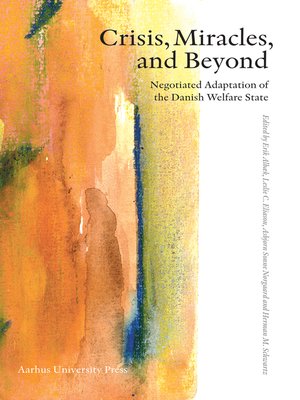Crisis, Miracles, and Beyond
ebook ∣ Negotiated Adaptation of the Danish Welfare State
By Erik Albaek

Sign up to save your library
With an OverDrive account, you can save your favorite libraries for at-a-glance information about availability. Find out more about OverDrive accounts.
Find this title in Libby, the library reading app by OverDrive.



Search for a digital library with this title
Title found at these libraries:
| Library Name | Distance |
|---|---|
| Loading... |
How did Denmark avoid a macro-economic catastrophe in the 1980s and 1990s and still manage not only to maintain but also expand its welfare state? Denmark's macro-economic troubles apparently derived from a number of vices identified by critics of the welfare state: it had an enormous, thoroughly unionized, and unresponsive public sector; large numbers of people relied on the state for their livelihood, making programmatic cuts politically difficult; many programs had the characteristic of property rights and were hard to modify. Taxes to sustain this welfare state compressed investment, eroding both fiscal and current account balances. Yet by the mid 1990s, public support for the welfare state was as high as ever, while fiscal and current accounts were essentially in balance. The analyses in this book suggest that most of the vices that traditional welfare state scholarship identifies are also virtues. This book presents a comprehensive picture of how the Danish welfare state and political economy works by looking at the governance of and interactions between the welfare state and economy at all levels, using analyses of general macro-economic policy, center-local relations, budgeting, labour market, and welfare state transfers and services in three critical areas. A critical introductory survey of the welfare state literature and a synthetic conclusion frame these studies. This fine-grained analysis shows how alleged weaknesses were actually strengths that allowed a negotiated adaptation of the Danish model to external and internal changes. This sheds light on the future of the welfare state and economic governance in a globalizing world, and the complementarities and synergies between economic and welfare state governance.







